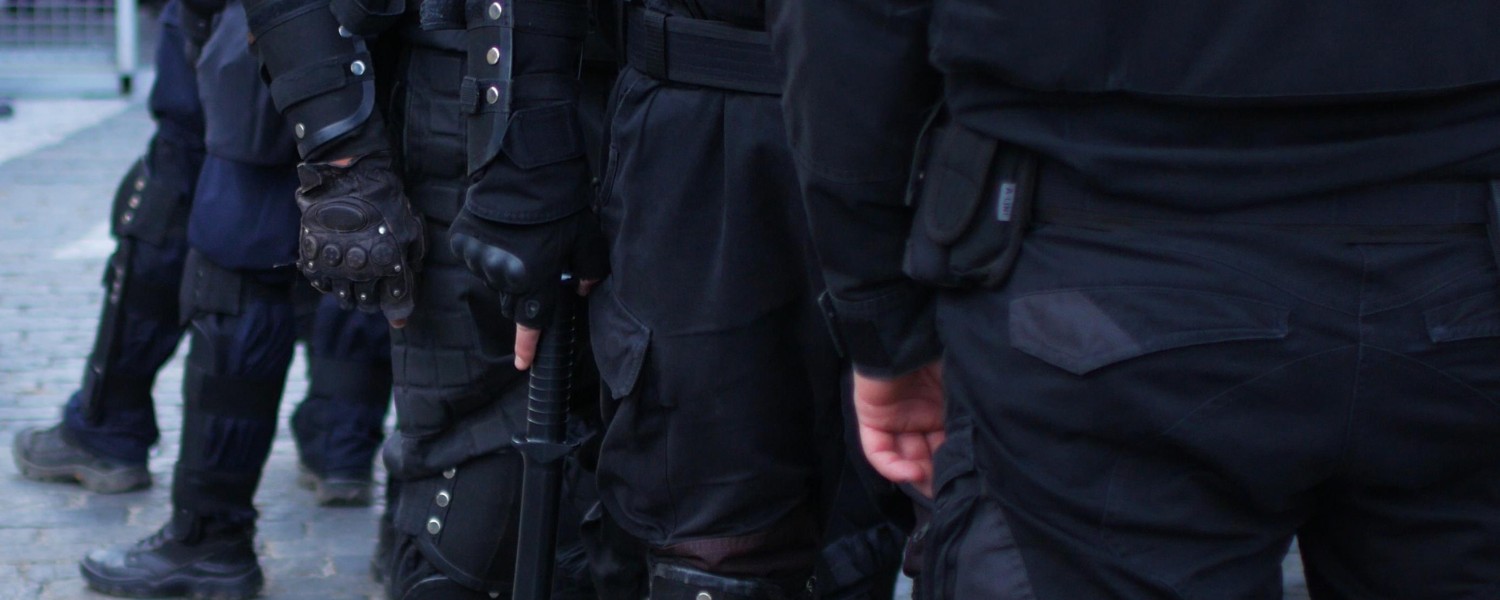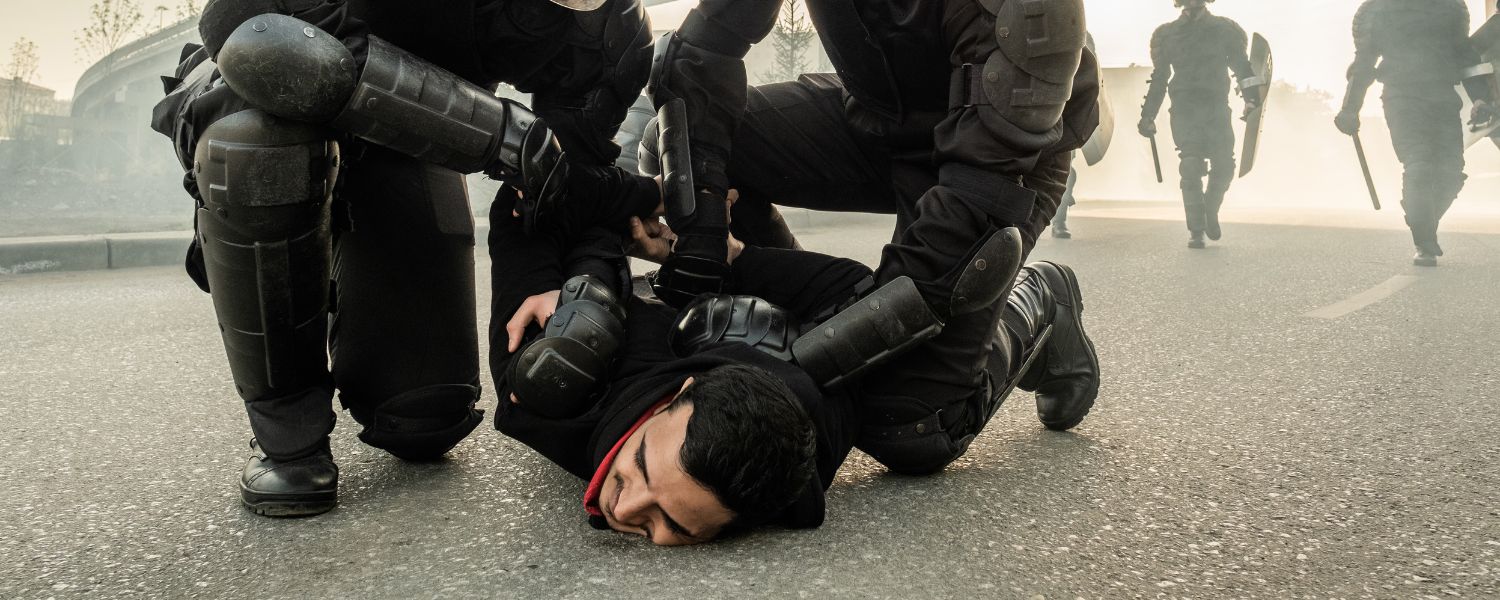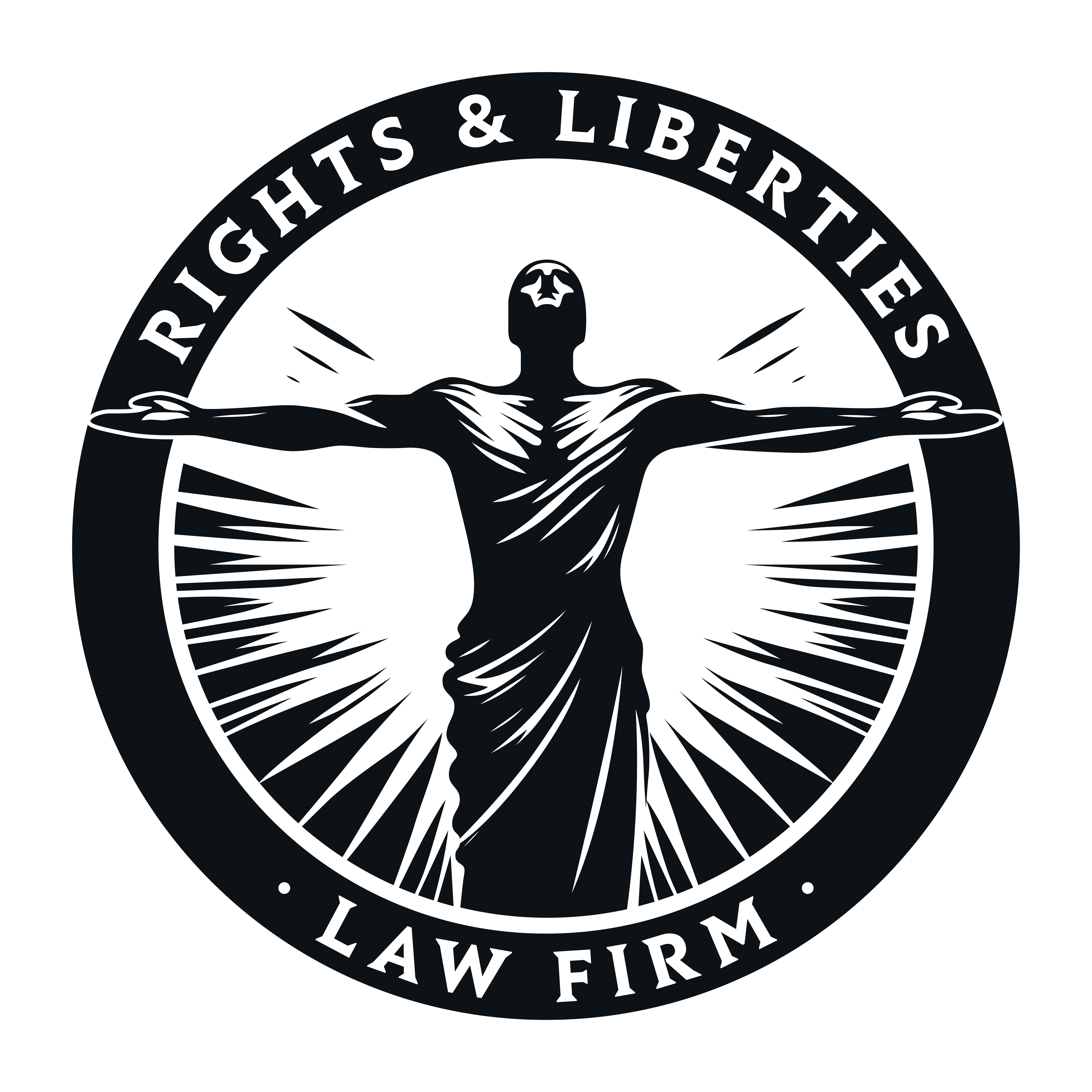Excessive Force in Colorado
What constitutional rights protect citizens from excessive use of force by police officers?
The Fourth Amendment to the United States Constitution and Art. II, section 7 of the Colorado
Constitution guarantee citizens the right to be free from excessive force. This same right applies to
pre-trial detainees who are detained in jail under the Fourteenth Amendment to the United States
Constitution and Art. II, sections 16 and 25 of the Colorado Constitution. The right to be free from
excessive force also applies to prisoners incarcerated in prison who have been subjected to excessive
force by corrections officers under the Eighth Amendment to the United States Constitution and
Art. II, section 20 of the Colorado Constitution.

What is excessive force or police brutality in Colorado?
Excessive force, also known as police brutality, refers to force in excess of what a police officer under the circumstances is constitutionally justified in using. A police officer may be held liable for using excessive force during an arrest, an investigatory stop, or other seizures if the degree of force the police officer used was not objectively reasonable under the circumstances. A police officer may also be liable for not preventing another police officer from using excessive force. This is called failure to intervene.
In Colorado state and federal courts, civil rights claims of excessive force are analyzed under the
objective reasonableness standard. In determining the reasonableness of the manner in which a
seizure is effected, the court must balance the nature and quality of the intrusion on an individual’s
Fourth Amendment interests against the importance of the governmental interests alleged to justify
the intrusion. The reasonableness of an officer’s conduct must be assessed from the perspective of a
reasonable officer on the scene, recognizing the fact that the officer may be forced to make split-
second judgments under stressful and dangerous conditions. The Fourth Amendment standard
requires an inquiry into the factual circumstances of every case. Courts determine whether an
officer’s use of force was objectively reasonable by evaluating it under the factors laid out in Graham
v. Connor, 490 U.S. 386, 397 (1989), considering
- the severity of the crime at issue,
- whether the suspect poses an immediate threat to the safety of the officers or others, and
- whether the suspect is actively resisting arrest or attempting to flee.
When do excessive force cases happen in Colorado?
Excessive force cases arise when police officers overstep their authority and abuse their powers by
using unjustifiable force in violation of a citizen’s constitutional right to be free from unreasonable
seizures. Although police officers are authorized to use force when trying to take an arrestee into
custody, to prevent an arrestee’s escape, or to defend against an assault or attempted assault by the
arrestee, the degree of force the officer uses in effectuating the seizure must be objectively
reasonable. If not, the police officer has violated a citizen’s constitutional rights and the citizen may
have an actionable civil rights excessive force claim against the police or corrections officer.
Not all police uses of force will rise to the level of excessive force. Rights and Liberties Law Firm
has created a list of relevant factors that can help determine if an excessive force claim may exist.
This list of factors is not exhaustive. No single fact alone is dispositive and all facts must be weighed
according to the totality of the circumstances. Below is a table listing the common factors litigants,
courts, and juries will look at when deciding if a police officer’s use of force was objectively
reasonable or constituted unconstitutional excessive force for which the police officer may be found
liable.
Excessive Force Factors
Facts and Circumstances Surrounding Police Citizen Encounter
Factors that may weigh in favor of finding excessive force
Police did not contact citizen to investigate a
crime
Police contacted citizen to investigate a non-serious non-violent misdemeanor or petty
offense
Citizen did not try to escape from police
Citizen did not threaten police
Citizen bad mouthed or talked back to police
but showed no signs of physical aggression
Citizen was not aggressive towards police
Citizen did not resist police
Citizen did not try to use force on police
Citizen did not use force on police
Citizen was unarmed
If the citizen was armed, citizen did not pull
weapon, display weapon, or threaten to use the
weapon on police officer during the encounter
Other individuals on scene did not cause police
officer to reasonably believe their safety was
endangered
Factors that may weigh against a finding of
excessive force
Police contacted citizen to investigate a serious,
violent felony offense
Police knew they were contacting citizen to
investigate a serious, volent felony offense
Citizen tried to escape from police
Citizen threatened police
Citizen bad mouthed or talked back to police
while being physically aggressive
Citizen was aggressive towards police
Citizen resisted police
Citizen tried to use force on police
Citizen used force on police
Citizen was armed with a weapon
Citizen was armed with a weapon and pulled
the weapon, displayed the weapon, or
threatened to use the weapon on police officer
during the encounter
Other individuals on scene caused police
officer to reasonably believe their safety was
endangered
Excessive Force Factors
Type and Amount of Force Used
Excessive force cases often involve overzealous police officers using extreme force in situations that
do not justify such violent, painful, dangerous, or even deadly use of force. Common situations
include police officers tackling citizen without justification, unreasonably body slamming citizens
during an arrest, punching citizens for talking back to police, or when police officers use so called
less lethal weapons like pepper spray, tasers, batons, or nunchucks on citizens when the
circumstances do not permit police to use such force. The most extreme excessive force cases often
involve police officers who shoot or kill citizens without justification during the police citizen
encounter. Here are some types of use of force scenarios litigants, courts, and juries will look at
when deciding if a police officer’s use of force and the amount of force used was objectively
reasonable or constituted unconstitutional excessive force for which the police officer may be found
liable:
- Batons
- Bean bag guns
- Body slams
- Chokeholds
- Dogs
- Firearms (shooting)
- Firearms (unnecessary display)
- Flashbangs
- Hand cuffing related injuries
- Kicks
- Martial arts techniques
- Nunchucks
- Pepper spray
- Police cars
- Punches
- Tackles
- Tasers
- Transport vehicles

The purpose of an excessive use of force civil rights suit: justice, damages, and compensation
When a person has been subjected to extreme use of force by police that person may have been
subject to an unreasonable seizure in violation of their constitutional rights. This constitutional
violation may be actionable as an excessive use of force civil rights suit.
As citizens have a constitutional right to be free from excessive force, if the individual who engaged in excessive force is a government official, which police officers are, then the citizen has the right to bring a civil rights suit under 42 U.S.C. § 1983 and C.R.S. § 13-21-131.
The purpose of an excessive force civil rights suit is to hold police officers who abuse their powers accountable and to compensate a person for the pain, suffering, and damages the police officer caused. These damages may include compensation for actual economic damages like medical expenses caused by the excessive force incident, losses, compensatory damages like physical and mental pain, humiliation, fear, anxiety, loss of enjoyment of life, loss of liberty, privacy, and sense of security and individual dignity, punitive or exemplary damages, attorney fees, costs, loss of reputation, loss of income, and other damages stemming from the excessive force incident.
Proving an excessive use of force civil rights claim in Colorado
In a claim for excessive use of force, the plaintiff must prove by the preponderance of the evidence
that
- Defendant was a “Peace Officer;” acting under color of law;
- Defendant seized the Plaintiff; and
- in seizing the Plaintiff, Defendant used a level of force that was objectively unreasonable under the circumstances.
The court will instruct the jury that when determining reasonableness in the use of excessive force context a jury shall consider, among other factors: (1) the severity of the suspected crime; (2) whether the suspect posed an immediate threat to the safety of officers; and (3) the suspect’s degree of resistance. The jury may also consider the extent of any injuries suffered by the plaintiff, the officers’ efforts to minimize the amount of force, and the legitimate government interests furthered by the use of force such as the need to maintain officer or public safety.
If the jury finds that all three elements of excessive use of force have been proven by the preponderance of the evidence, the defendant police officer will be found liable for having violated the plaintiff’s constitutional right to be free from unreasonable seizures amounting to excessive use of force. The jury will also determine the amount of damages to be awarded to the plaintiff.
What is the statute of limitations for an excessive force civil rights claim in Colorado?
The statute of limitations for civil rights suits in Colorado brought under 42 U.S.C. § 1983 or C.R.S. § 13-21-131 is two years from the time a cause of action accrues. Excessive use of force civil rights claims arising out of police actions toward a citizen are presumed to have accrued when the actions actually occurred.
Contact Denver’s trusted excessive force attorney to find out if you have a viable excessive use of force case
Excessive use of force cases are often complex as they require an in depth understanding of the Constitution and Fourth Amendment and seizure related jurisprudence. When a person is subjected to excessive force by a police officer they can experience a wide array of harms including pain, suffering, injury, medical expenses, even death. Excessive force cases require thorough investigation and steadfast advocacy to prevail in court. A skilled excessive force attorney can help you hold the police officers who engaged in excessive force accountable for violating your constitutional rights.
To know whether or not you have a viable excessive force case, the first step is to contact Rights & Liberties Law Firm to start your free police misconduct civil rights case evaluation. If your rights have been violated and your liberties trampled by a cop who subjected you to excessive force, the attorneys at Rights & Liberties Law Firm are here to fight for you and get you the justice and compensation you deserve.
Three-Step Path to Civil Rights Representation
Step one. If you’ve been the victim of police brutality or a government officer has
violated your or a loved one’s rights, complete our Free Civil Rights Case Evaluation.
Confidentially upload videos, photos, and other documents of evidentiary value directly
to our civil rights case evaluation portal and start the process of holding those who abuse
their powers accountable for violating your rights. Civil rights cases rise and fall on the
facts of the case. Our Free Civil Rights Case Evaluation is designed to gather the
information necessary to determine if you have a case where we can vindicate your rights
and get you the justice and compensation you deserve. Be sure to answer each question
in our Free Civil Rights Case Evaluation in a detailed and clear manner.
Step two. Our team will evaluate your case. If we need additional information from you
to complete your case evaluation we will contact you. Once we’ve completed your case
evaluation, we will promptly contact you to let you know if we can help you with your
case. If so we’ll schedule a consultation to learn more about your story.
Step three. During our consultation we’ll determine if there’s a viable path to vindicate
your rights. If there is, and you’re ready to hold those accountable who violated your
rights, we’ll provide you with a contingency fee agreement to review and sign. Then the
fight is on. You pay nothing until we’re victorious.
